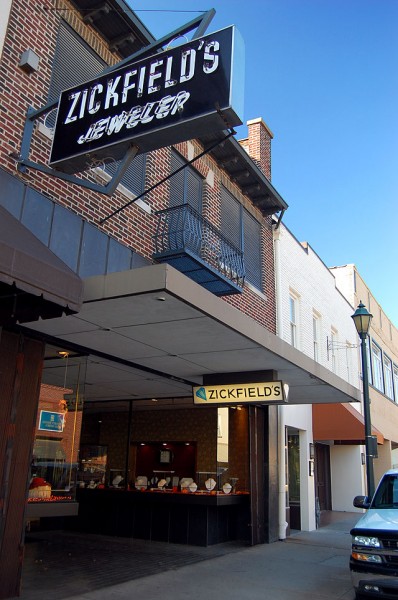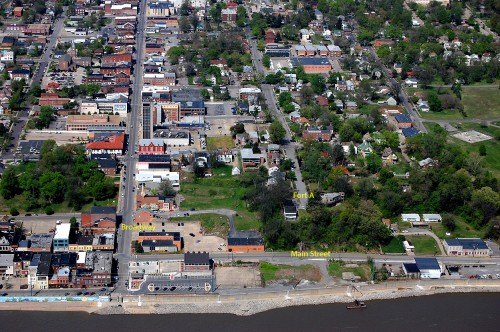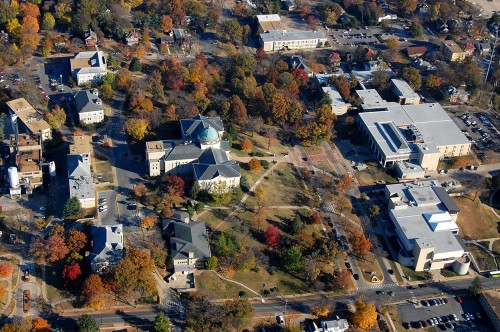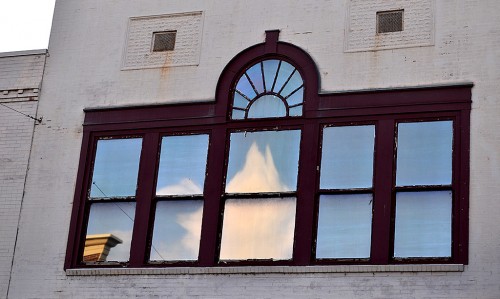
I went to Sharon Woods Hopkins‘ Killerfind book launch Friday night. I’ll post a review in a couple of days after I’ve had a chance to read it. Here’s a review of her earlier book, Killerwatt.
While I was wandering around in the gallery where the book signing was held, a fellow walked up to me and said something to the effect of “do you know what you’re doing with that thing?” referring to my camera.
I gave my stock answer, “Sometimes I get lucky, stumble and happen to hit the shutter button when the camera is pointed at just the right direction.”
“If you hold the button down, you’ll have a better chance,” he advised.
(As always, you can make the photo larger by clicking on it. Just don’t hold down the button: it won’t make it any better.)
It’s more than holding down the button
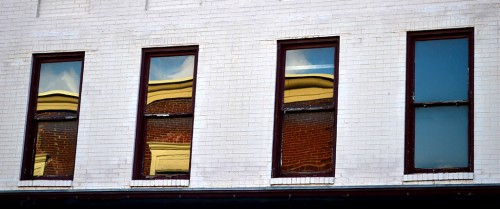
That’s one of the biggest misconceptions a lot of people have. “People who do that,” I said, growing a bit testy, “manage to miss THE picture. They get a frame before the peak of action and a frame AFTER the peak of action because they’re letting the camera do the thinking for them.”
“Not if you’re shooting 17 frames a second,” the guy persisted. Our conversation wrapped up shortly after that. Sometimes you have to recognize early that some folks go to a different church than you do.
I wandered across the street to the Art Council gallery to see if Sis-in-Law Marty Riley was there. She said she had a waterfall painting hanging she particularly liked. I missed her, but enjoyed the waterfall.
High-falutin’ faldorol
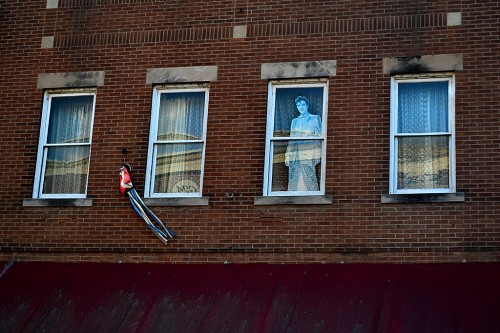
Nightmarish feelings of Ohio University’s Fine Arts program washed over me in the gallery. I paused to read one artist’s mission statement and thought, “You gotta be kidding me.” It turned out that I actually liked his work, despite the high-falutin’ faldorol he had written explaining the project.
My feeling is that a photo or piece of art should stand on its own. Having to explain the “meaning” of a photograph is like having to explain the punchline of a joke. Either it works or it doesn’t. Words can tell you the story behind the photo, but the image has to stand on its own merits.
OK, enough rant about that.
Sudden rush of art to the heart
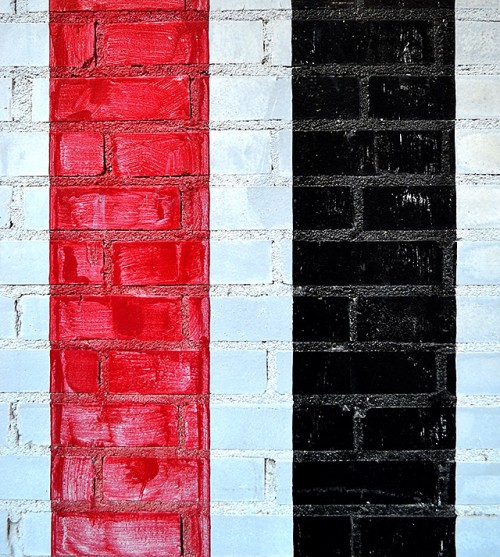
Maybe it was the sudden rush of art to the heart or I might have been light-headed from the heat, but I started walking down Main Street in an artsy-fartsy frame of mind. The first thing I spotted was this brick wall that had been painted white, red and black.
In class, somebody would go off on a tangent about how the vertical lines in this photograph represent the division in our society, and even THAT segregation is fragmented more by the hierarchical lines separating the vertical polarization. “Nah,” I’d respond “It is a white brick wall that somebody painted red and black stripes on.”
I’m a Joe Friday kind of photographer: “Just the facts, Mam.”
Like playing scales on a piano
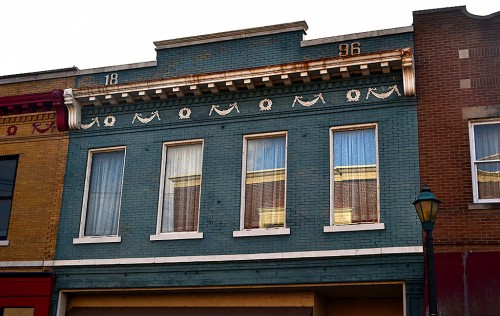
Then I started seeing the late afternoon reflections in the windows on the west side of the street. I’m not going to pretend these are art. They were just finger exercises like somebody playing scales on a piano.
(I wish it had been dark enough that the street light had come on. That would have made the photo better.)
OK, THIS offends me
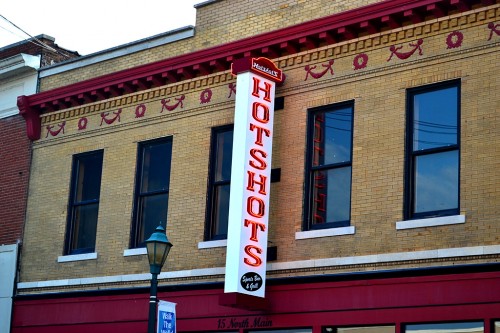
How can you take a classic, landmark building and tart it up with a cheesy sign?
Why are you shooting THIS?
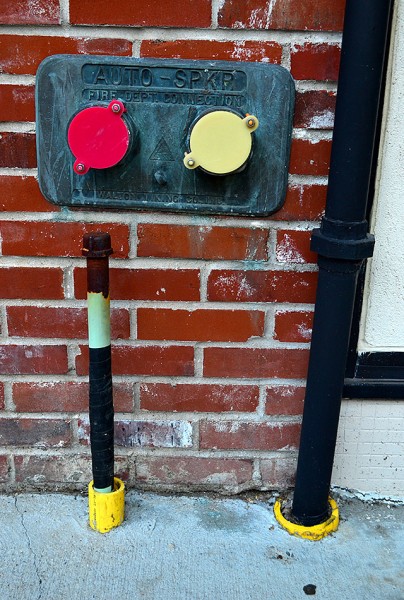
I was on my knees trying to see if there was a picture worth taking of the sprinkler pipes (there wasn’t), when I sensed someone standing near me. A woman’s voice asked, not unkindly, “Of all the pretty things there are in town, why are you shooting THIS?”
Standing up as gracefully as I could (not very), I gave her my standard National Geographic speech: “National Geographic photographers stand on trash cans to shoot roses; I trample roses to shoot trash cans.”
We chatted a bit about downtown Cape (she thinks there are too many bars), then I said, “I’m Ken, by the way.”
I’m Bambi (the Yarn Bomber)
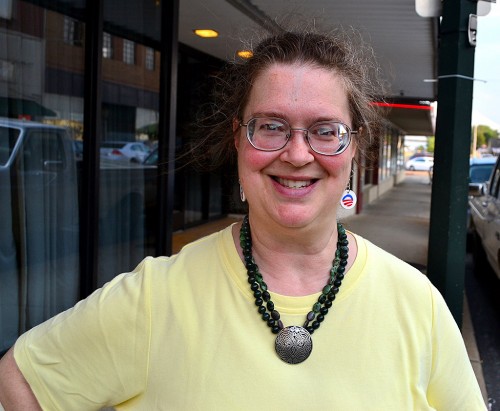
“I’m Bambi,” she responded, shaking my proffered hand.
We talked a bit more, then I just had to ask, “Is you name REALLY Bambi?”
“If I said it was ‘Dr. Bambi,’ would that make it better?” she asked. She was Dr. Bambi Robinson, a SEMO prof.
Then, she dropped the bomb: SHE was Cape’s Yarn Bomber. SHE’S the one who did the work that appeared on benches and supports on Main Street. “There were more, but they were stolen.”
Before we parted, she told me how to find the infamous Cardiac Hill and the Gum Tree (it was in a different place than I had remembered it). I’ll have pictures of those later on.
Temperatures better start dropping soon. It’s getting kitten-kicking hot out here. [That’s just an expression, not something I would ever think of doing.]


